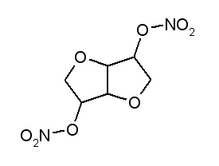Clinical Question: Does the combination of hydralazine and isosorbide dinitrate improve outcomes in black patients with systolic heart failure?
Setting: Outpatient (specialty)
Study Design: Randomized controlled trial (double-blinded)
Allocation: Concealed
Synopsis: In this manufacturer-sponsored study, investigators identified black adult patients with a left ventricular ejection fraction of no greater than 35 percent (or less than 45 percent with a reduced left ventricular internal, end-diastolic diameter). Exclusion criteria included acute myocardial infarction, acute coronary syndrome, recent stroke, recent cardiac surgery or angioplasty, valvular heart disease, or hypotension or uncontrolled hypertension. The primary outcome was a composite of death, hospitalization, and change in quality of life.
The authors took an innovative approach to assigning different weights for these out-comes. For example, death was three times as bad as a hospitalization. Allocation to groups was concealed, outcome assessment was appropriately blinded, and analysis was by intention to treat. Patients were a mean age of 57 years, 60 percent were men, and 95 percent were classified as New York Heart Association class III (i.e., moderately severe heart failure symptoms).
Patients were randomized to receive 37.5 mg of hydralazine plus 20 mg of isosorbide dinitrate three times daily (with that dos-age doubled, if tolerated) or matching placebo. Approximately two thirds of patients achieved the final target dosage. The study ended early because of a significant benefit in the active treatment group. This benefit included a significantly lower risk of death from any cause (6.2 versus 10.2 percent; number needed to treat [NNT] = 25; 95 percent confidence interval [CI], 10 to 40), a lower likelihood of first hospitalization for heart failure (16.4 versus 24.4 percent; NNT = 12; 95 percent CI, eight to 20), and a greater improvement in quality-of-life score. Adverse effects were common in the active treatment group: primarily headache (47 versus 19 percent for placebo) and dizziness (29 versus 12 percent for placebo). Bottom Line: The combination of hydralazine (37.5 to 75 mg) and isosorbide dinitrate (20 to 40 mg) given three times daily improves survival and quality of life, and reduces the likelihood of hospitalization in relatively young black patients with left ventricular dysfunction. (Level of Evidence: 1b)
Study Reference: Taylor AL, et al. Combination of isosorbide dinitrate and hydralazine in blacks with heart failure. N Engl J Med November 11, 2004;351:2049-57.
Used with permission from Ebell M. Isosorbide dinitrate + hydralazine effective for HF in black patients. Accessed online December 28, 2004, at: http://www.InfoPOEMs.com.
COPYRIGHT 2005 American Academy of Family Physicians
COPYRIGHT 2005 Gale Group



